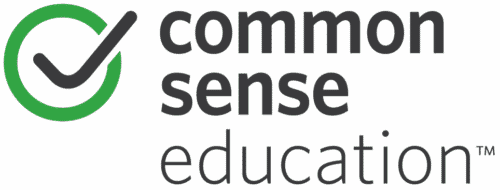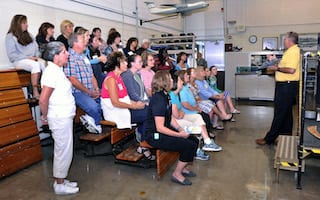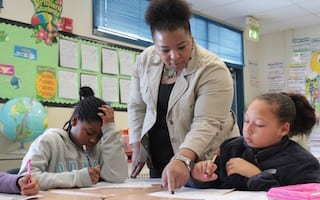Table of Contents
Inspire your fellow educators to embrace opportunities for growth
By Dr. Karri Adams
Teacher Voices: This article is part of a series of from-the-classroom perspectives.
 Teachers are no strangers to differentiating instruction for their students, and neither are instructional coaches and digital learning facilitators. After being caught in a vicious cycle of sit-get-repeat for too long, I decided to try a new approach for professional learning, one that engages teachers in creative thinking, challenges what they know about best practices for digital teaching, and differentiates their learning opportunities — both intentionally and intuitively — for a meaningful and authentic professional growth experience.
Teachers are no strangers to differentiating instruction for their students, and neither are instructional coaches and digital learning facilitators. After being caught in a vicious cycle of sit-get-repeat for too long, I decided to try a new approach for professional learning, one that engages teachers in creative thinking, challenges what they know about best practices for digital teaching, and differentiates their learning opportunities — both intentionally and intuitively — for a meaningful and authentic professional growth experience.
This isn’t the norm in professional learning. As the facilitator of those new experiences, I felt as though the approach I was developing in my mind was definitely the path less traveled. I recognized that asking teachers to just accept my ideas wasn’t realistic and that if I wanted feedback from teachers who had experienced a total mind shift as a result of a meaningful learning experience, I had to act fast. I recently read a quote by Nido R. Qubein: “Listen twice as much as you talk. Others will hear twice as much of what you say.” As a result of this change in practice, I can say that I completely understand how this applies to me professionally.
The Value in “Listening Twice as Much”
 Feedback and data over the past few years have indicated that teachers are tired of going to professional development sessions where they’re receiving repeat trainings on something they already know, or where they feel the content being delivered is far beyond their current level of understanding. For example, one middle school teacher said, “I would like professional development to be customized and personalized to what I teach … direct examples of how to embed technology into my lesson to maximize learning in my classroom.” Another said, “I want somebody right beside me to hold my hand. Because it just gives you confidence.” Many of their experiences have perpetuated a distaste of technology professional development, leading to low levels of teacher self-efficacy when integrating technology in daily classroom instruction.
Feedback and data over the past few years have indicated that teachers are tired of going to professional development sessions where they’re receiving repeat trainings on something they already know, or where they feel the content being delivered is far beyond their current level of understanding. For example, one middle school teacher said, “I would like professional development to be customized and personalized to what I teach … direct examples of how to embed technology into my lesson to maximize learning in my classroom.” Another said, “I want somebody right beside me to hold my hand. Because it just gives you confidence.” Many of their experiences have perpetuated a distaste of technology professional development, leading to low levels of teacher self-efficacy when integrating technology in daily classroom instruction.
This year, I decided to make a change in my approach as a digital learning facilitator. I had to. If the education community recognizes the use of assessment to further drive instruction, why shouldn’t I? This year, I chose to do with teachers what I encourage them to do for students — differentiate!
Just because we grow up, we do not grow out of our diversities and preferences toward learning.
Designing Meaningful Professional Learning
 When I’m planning to deliver support in specific topics, it’s critical that I meet the teachers where they are. To do this, my paradigm and core beliefs about adult learning have to align with what teachers in my trainings tell me. My professional development focus this year is training teachers to integrate Canvas with their content curricula and other web tools for effective instruction. The teacher feedback from these trainings shed light on two extremely telling perceptions:
When I’m planning to deliver support in specific topics, it’s critical that I meet the teachers where they are. To do this, my paradigm and core beliefs about adult learning have to align with what teachers in my trainings tell me. My professional development focus this year is training teachers to integrate Canvas with their content curricula and other web tools for effective instruction. The teacher feedback from these trainings shed light on two extremely telling perceptions:
- Teachers feel more confident integrating classroom technologies when they know they have the full support of an edtech professional. After one session, an elementary school teacher said with sincerity, “Thank you so much for coming to meet with us and plan for future technology activities. I appreciate you more than you know.”
- Teachers have their own specific expectations of what the support should look like, and they feel that if those expectations are met, a more positive and collaborative culture is established between the coach and teacher. In another session for high school teachers, I was told that “having two focused hours to do what I wanted to do with Canvas this week has turned my whole attitude around from being something I know I should use to something I can see as a manageable resource!”
Driving PD with Teacher Self-Assessment
 It was obvious to me that it was grossly inappropriate to design one session and expect it to fit the needs of every adult learner who would encounter it. Before going into a session to work with teachers, I would ask them to self-assess what they thought their current level of ability was with regard to a topic for technology integration in their classrooms.
It was obvious to me that it was grossly inappropriate to design one session and expect it to fit the needs of every adult learner who would encounter it. Before going into a session to work with teachers, I would ask them to self-assess what they thought their current level of ability was with regard to a topic for technology integration in their classrooms.
In the midst of this critical conversation, something magical happened.
Self-assessment results were funneled into three tiers of perceived concept mastery:
- Tier 1: Basic knowledge of concept. Teachers in this group had limited knowledge of the concept or topic being presented through professional development and little or no experience integrating it into classroom instructional practices.
- Tier 2: Intermediate knowledge of concept. Teachers in this group had some knowledge of the concept or topic being presented through professional development and were familiar with integrating it into classroom instructional practices — but not consistently or frequently enough to transform student learning.
- Tier 3: Advanced knowledge of concept. Teachers in this group had a fairly deep understanding of the concept or topic being presented through professional development and were consistently and frequently integrating it into classroom instructional practices in ways that totally reinvented student learning.
 This kind of mastery grouping was critical for two reasons. First, teachers had the control to determine which session was right for them. This accountability and ownership of their learning seemed to make the time more valuable to them. Second, I was able to begin a professional learning design that targeted those three groups and would gradually increase the current level of skill for all teachers — regardless of the group they associated with — in a way that was developmentally appropriate based on how they gauged their understanding.
This kind of mastery grouping was critical for two reasons. First, teachers had the control to determine which session was right for them. This accountability and ownership of their learning seemed to make the time more valuable to them. Second, I was able to begin a professional learning design that targeted those three groups and would gradually increase the current level of skill for all teachers — regardless of the group they associated with — in a way that was developmentally appropriate based on how they gauged their understanding.
This intentional differentiation used self-identified teacher “need” as the priority for the professional development session. In this way, the learning experience became very tailored and personalized. Another important factor in the intentional design of these sessions was to ensure that the professional learning would be sustained over time. In this model, conducting weekly sessions for three to four weeks with the differentiated groups has been most effective.
The intuitive differentiation occurred when I arrived for the professional development session and met the teachers for the first time. After introductions, I immediately began by asking teachers what they’d like to know more about and what their most immediate instructional technology needs were. In times when they struggled to generate those initial thoughts, I shared with them the ideas I had already prepared based on what I developed during the intentional planning of the session.
 In the midst of this critical conversation, something magical happened. Through this communication, I worked with teachers to establish whether training occurred in small groups, with individuals paired with their own technology coach, or within breakout sessions of different topics based on ability and interest. It is from this point in the training that we (digital learning facilitators) worked to deliver the content teachers had specifically asked for in the way they requested for us to teach it.
In the midst of this critical conversation, something magical happened. Through this communication, I worked with teachers to establish whether training occurred in small groups, with individuals paired with their own technology coach, or within breakout sessions of different topics based on ability and interest. It is from this point in the training that we (digital learning facilitators) worked to deliver the content teachers had specifically asked for in the way they requested for us to teach it.
Reflecting on the Impact
These practical changes have been eye-opening and overwhelmingly positive. For the first time in seven years as an edtech professional, I’m hearing teachers ask for more professional development with comments like, “Are you coming back? I hope so … this has been the most enjoyable professional development I have ever had!” My involvement in these changes has led me to a very important truth: Just because we grow up, we do not grow out of our diversities and preferences toward learning.
 The change you see isn’t in what we need as learners. The change becomes how we have to begin self-managing those needs as adults and be able to recognize what we need to be successful. It has been my complete honor to begin a journey in helping teachers realize these things about themselves, establish what they need to be better learners, and inspire them to embrace opportunities for growth. It hasn’t been easy, but it has been worthwhile and meaningful. Why, you might say? Because when a teacher tells you, their mentor or coach, that you have changed their life, it does nothing short of change yours.
The change you see isn’t in what we need as learners. The change becomes how we have to begin self-managing those needs as adults and be able to recognize what we need to be successful. It has been my complete honor to begin a journey in helping teachers realize these things about themselves, establish what they need to be better learners, and inspire them to embrace opportunities for growth. It hasn’t been easy, but it has been worthwhile and meaningful. Why, you might say? Because when a teacher tells you, their mentor or coach, that you have changed their life, it does nothing short of change yours.
This piece originally appeared on Common Sense Education.
 Dr. Karri Adams serves as a Digital Learning Facilitator for Wilkes County Schools in North Carolina. She serves K-12 classrooms by supporting teachers and students in digital learning. She also teaches courses in the Elementary Education undergraduate program at Lees McRae College in Banner Elk, North Carolina.
Dr. Karri Adams serves as a Digital Learning Facilitator for Wilkes County Schools in North Carolina. She serves K-12 classrooms by supporting teachers and students in digital learning. She also teaches courses in the Elementary Education undergraduate program at Lees McRae College in Banner Elk, North Carolina.
As a Common Sense Education Ambassador, Dr. Adams publishes blogs that raise awareness of teaching with technology and digital citizenship. Her dissertation studies examined the impact of the role that edtech professionals have on teacher technology efficacy and how that efficacy persuades or inhibits effective technology integration in classroom instruction. She is a passionate advocate for public education and the positive way that technology can enrich learning for all students–including her own personal children–little techies in the making.
Follow Dr. Adams on Twitter.
Further Reading
- Detroit News – Business leaders urge changes to K-12 education
- EdSurge – Free Platform Lets Teachers Find and Share Their Favorite Resources
- NPR – Oklahoma Teachers Learn On The Job Through Summer STEM Externships


